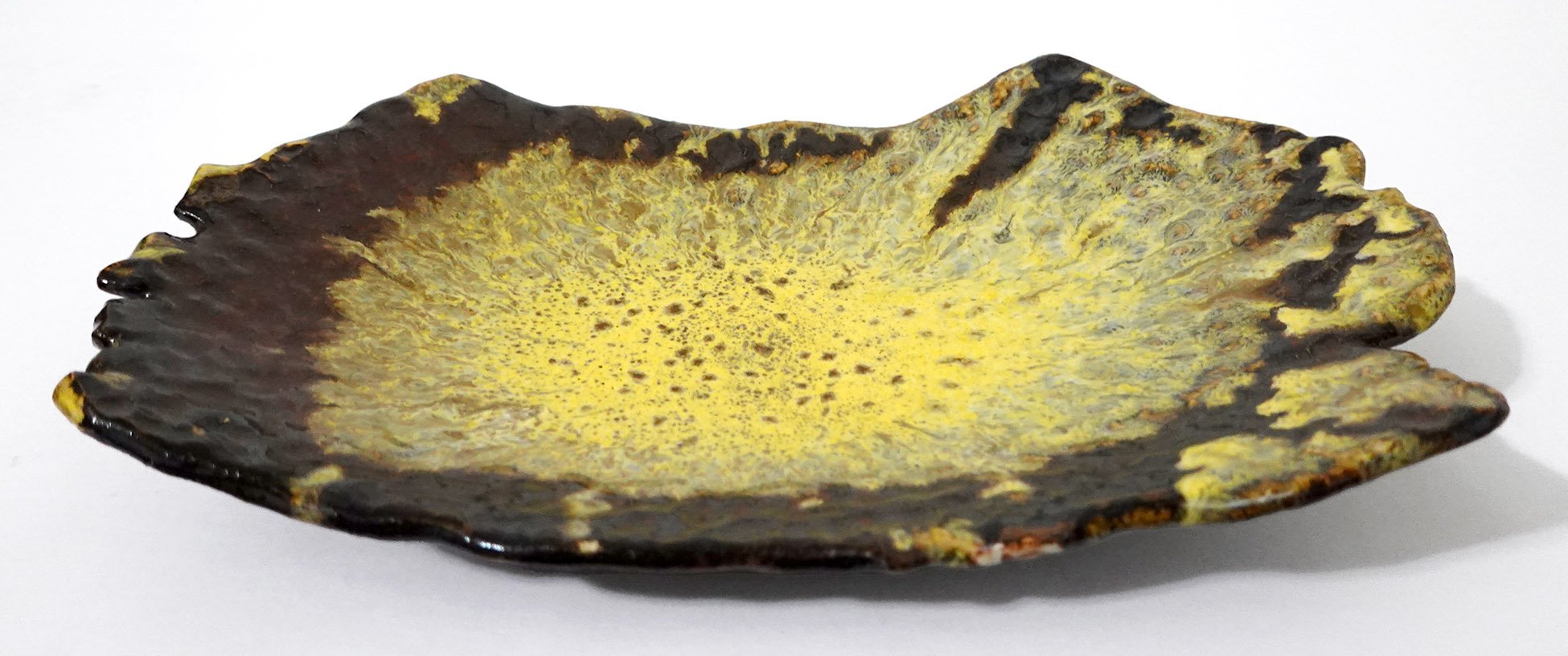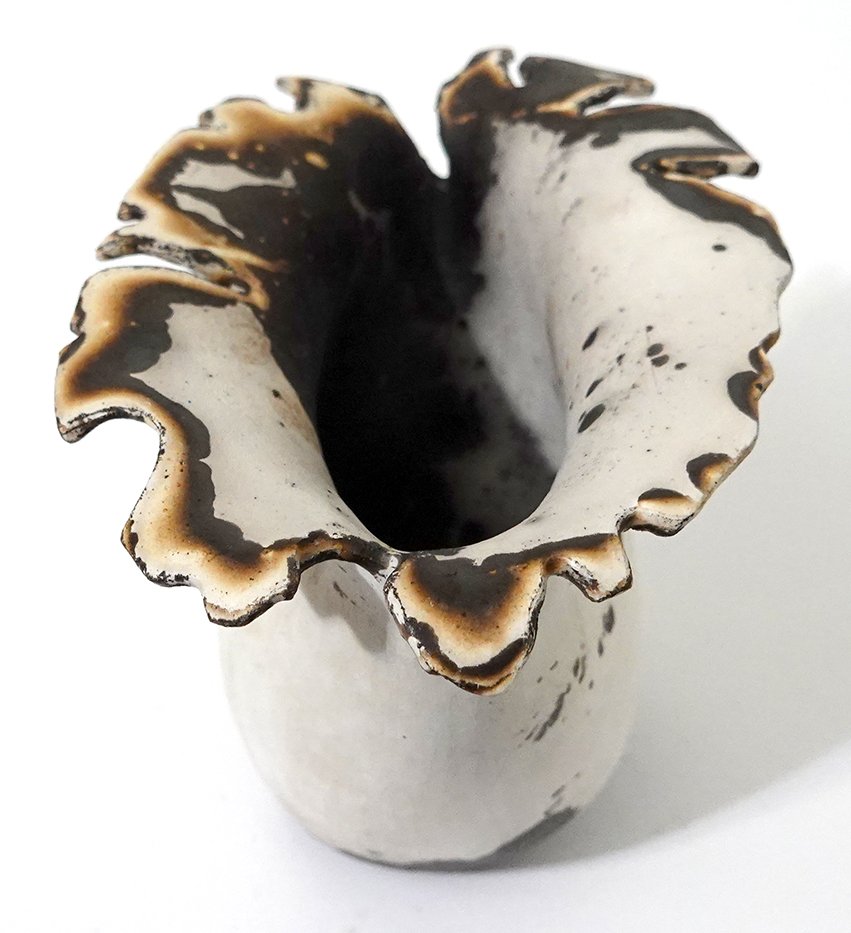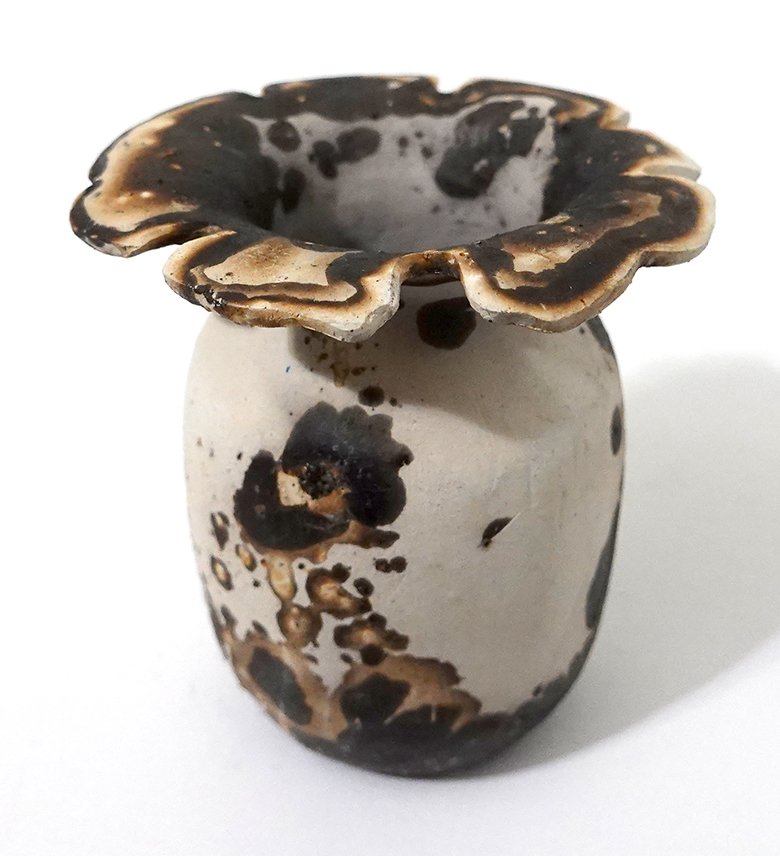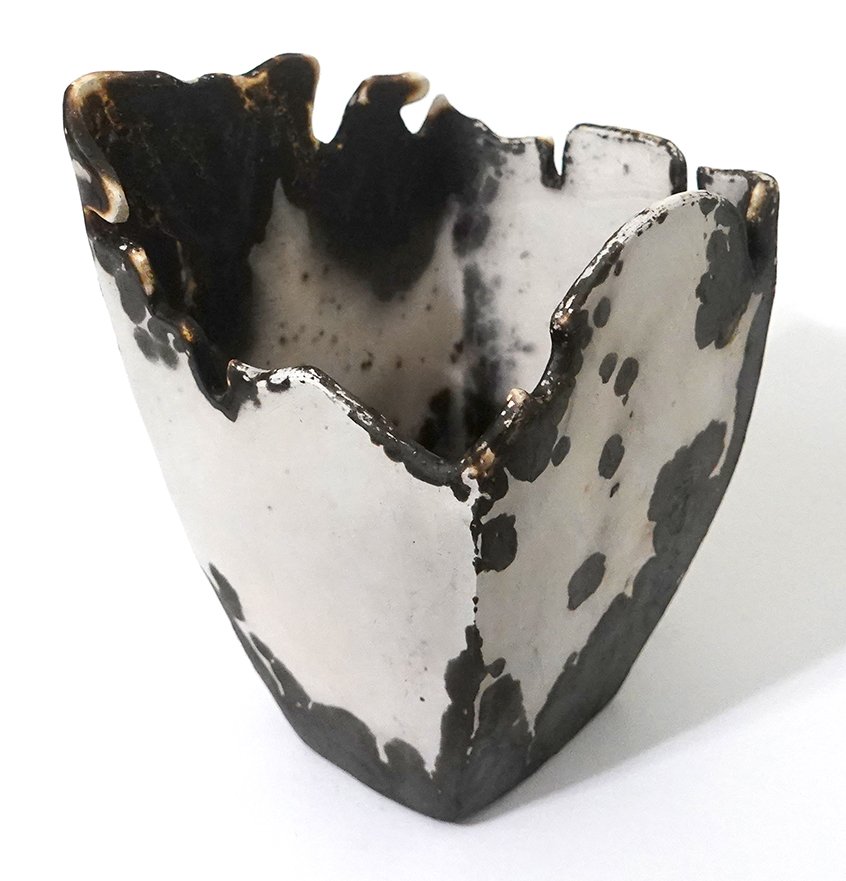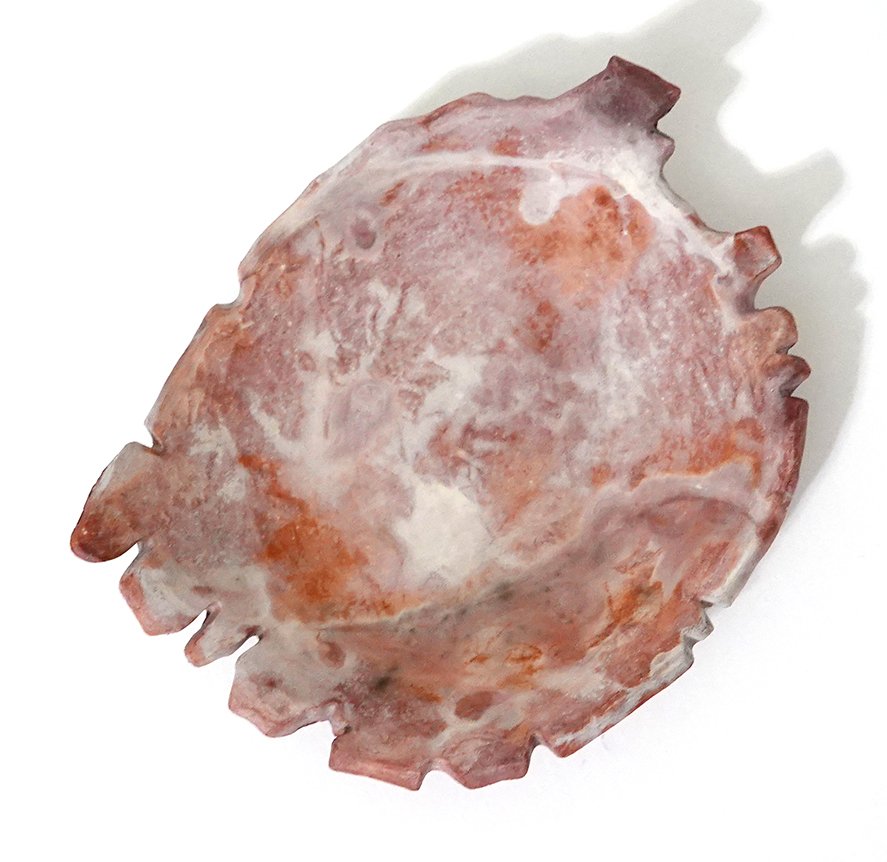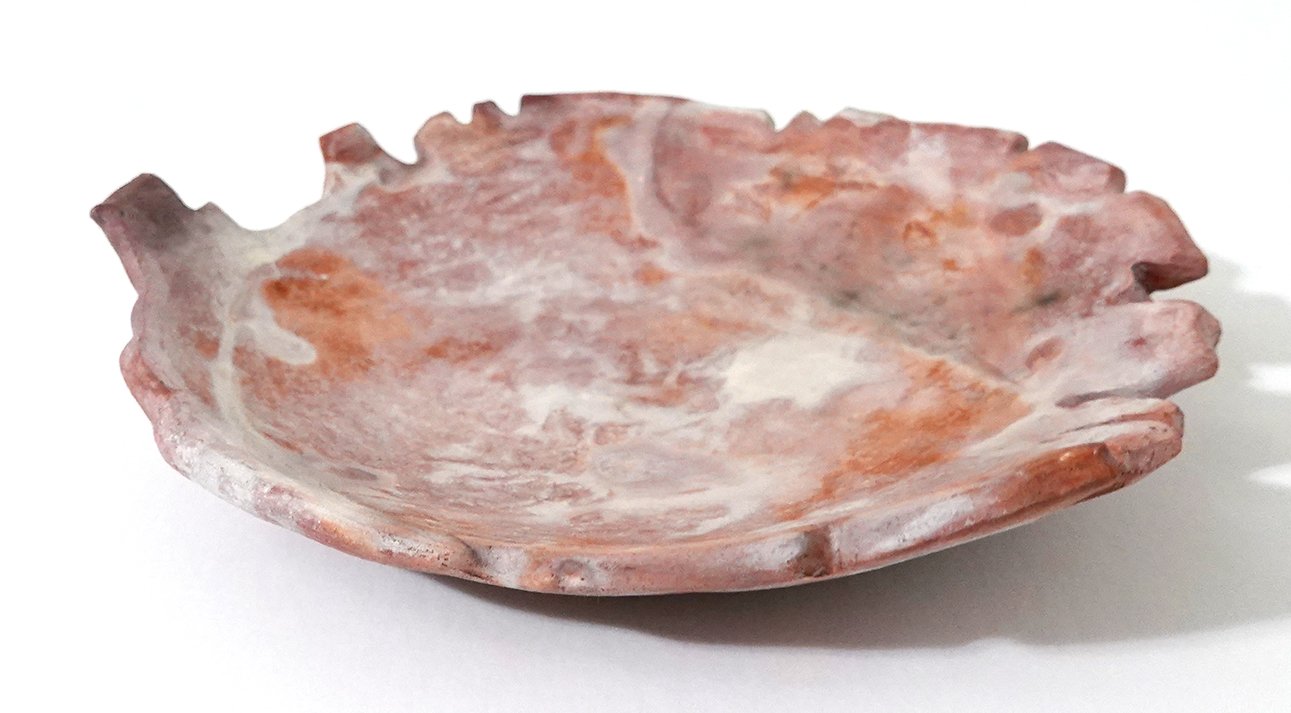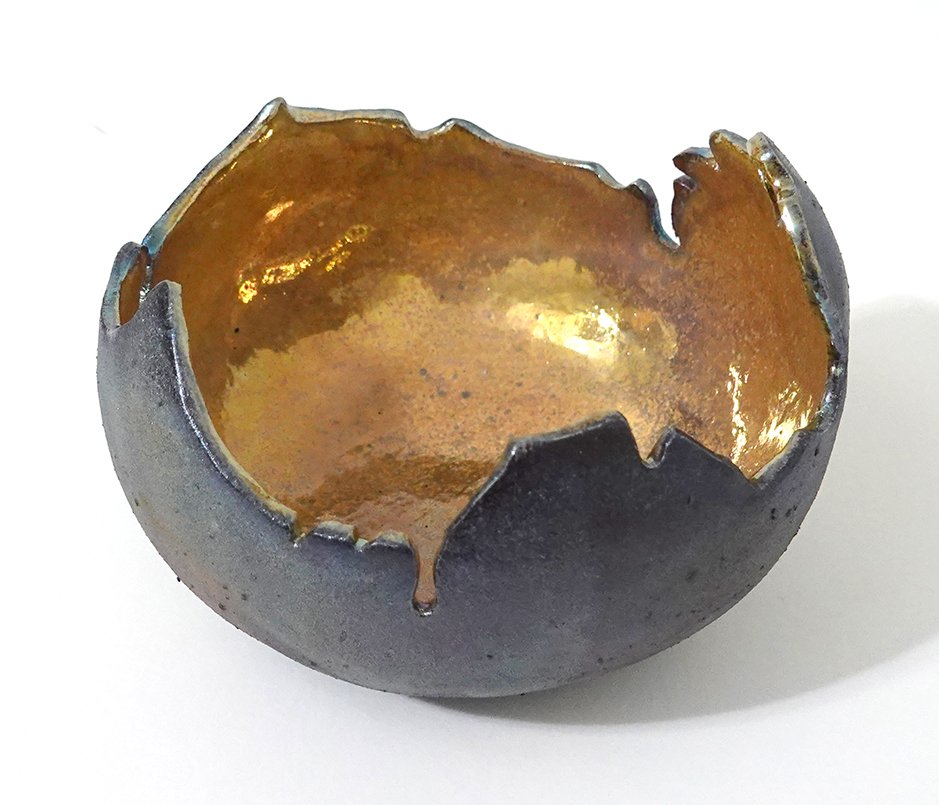I’ve been spending a lot of studio time with ceramics lately as I’ve got several bodies of work in progress simultaneously and each have different time pressures. I’ll discuss each as they continue to develop! However, in these photos I was preparing for the Dakota Potters Supply raku workshop I attended in Sioux Falls this past Saturday, April 23rd along with our ceramics instructor Paul Adamson and two Morningside students.
Since this semester has been so busy, I only had one raku piece ready to go by April 14th (the start of Morningside’s Easter break). I needed to have all the pieces I wanted to bring in the bisque firing by April 20th, which meant finishing the rawware by April 17th to give it time to dry. I cranked out seven more pieces over the holiday, so I was able to bring eight with me to the workshop! My sweet spot is between six to nine pieces for each workshop day, so that worked out perfectly.
In the first image, you can see me in the Morningside ceramics studio as I used the slab roller, a foam square, and a 6” mushroom anvil to prepare a few small platters. In the second photo, I’m handbuilding a vase in my kitchen at home.



